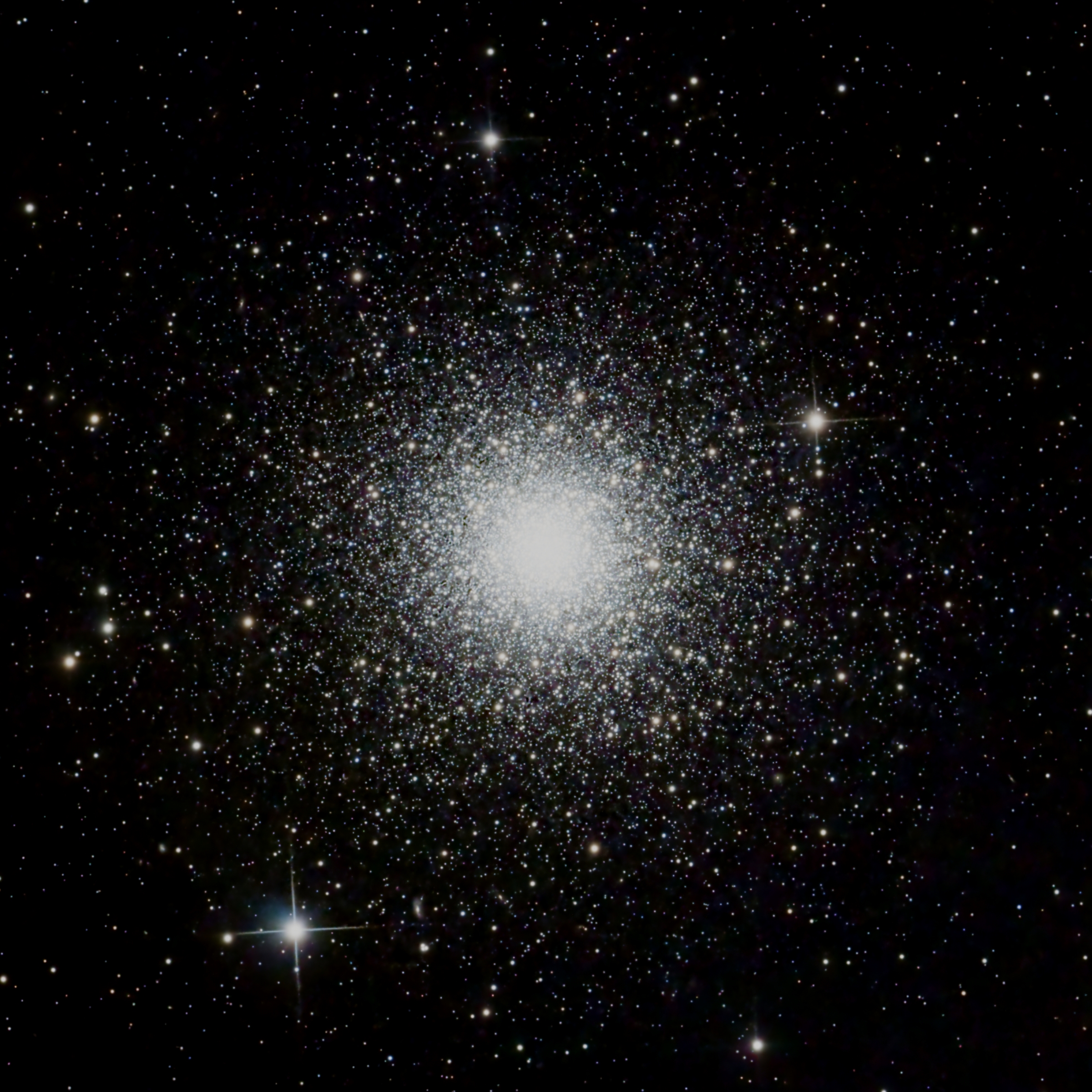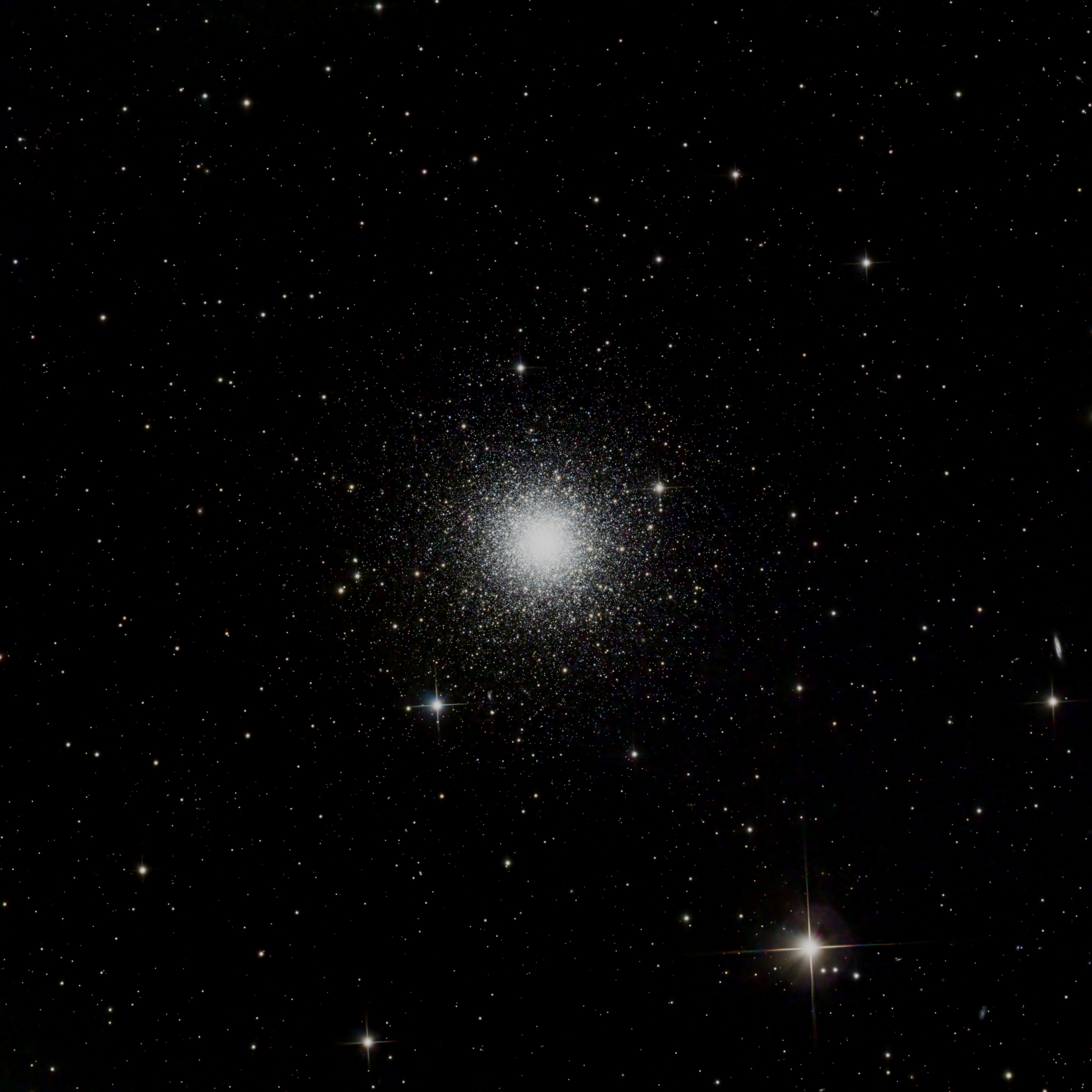
To zoom in or out on a computer, hold down the Ctrl key and scroll with the mouse, or you can press the + or - key. On a smart phone use 2 fingers.

M3 GLOBULAR CLUSTER ON 2024-04-03 - CLOSE IN
Messier 3, or M3, also named NGC 5272 is one of the largest globular clusters in our sky, and is composed of about 500,000 stars. It is estimated to be 11.4 billion years old and is about 32,600 light-years from the Earth. This globular cluster of stars is quite isolated because it is located 31,600 light-years above the Galactic plane and roughly 38,800 light-years from the center of our Milky Way Galaxy. It contains 274 known variable stars. These stars include 133 RR Lyrae variables, of which about a third display the Blazhko effect of long-period modulation. M3 has an overall abundance of elements other than hydrogen and helium, what astronomers refer to as it's level of metallicity. Messier 3 is the prototype for the Oosterhoff type I globular cluster, which is considered to be "metal-rich" for a globular cluster.
This photo was taken in Kyle, Texas, through a 6-inch f/4 Telescope, on a Sky-Watcher EQ6-R mount, with a ZWO ASI533MC PRO color camera. The processing was done in PixInsight. The total image acquisition time is: 02 hrs 38 min 00 sec.
M3 GLOBULAR CLUSTER ON 2024-04-03 - WIDE FIELD VIEW

Previous ... Older Photos:

M3 GLOBULAR CLUSTER on 2023-03-24

Globular Cluster M3 on 03-12-2008 also named NGC 5272
Done with my 17.5 inch scope and SBIG ST-9E CCD camera.